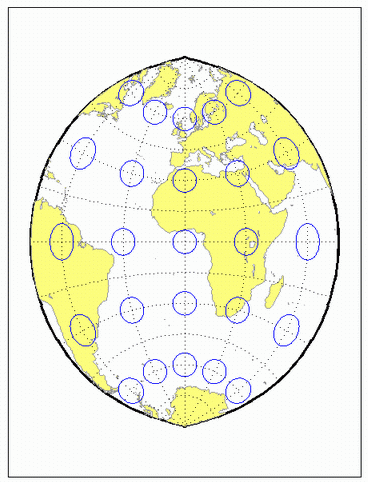polycon
Polyconic Projection
Classification
Polyconic
Identifier
polycon
Graticule
Central Meridian: A straight line.
Meridians: Complex curves spaced equally along the Equator and each parallel, and concave toward the central meridian.
Parallels: The Equator is a straight line. All other parallels are nonconcentric circular arcs spaced at true distances along the central meridian.
Poles: Normally circular arcs, enclosing the same angle as the displayed parallels.
Symmetry: About the Equator or the central meridian.
Features
For this projection, each parallel has a curvature identical to its curvature on a cone tangent at that latitude. Since each parallel has its own cone, this is a “polyconic” projection. Scale is true along the central meridian and along each parallel. This projection is free of distortion only along the central meridian; distortion can be severe at extreme longitudes. This projection is neither conformal nor equal-area.
Parallels
By definition, this projection has no standard parallels, since every parallel is a standard parallel.
Remarks
This projection was apparently originated about 1820 by Ferdinand Rudolph Hassler. It is also known as the American Polyconic and the Ordinary Polyconic projection.
Limitations
Longitude data greater than 75º east or west of the central meridian is trimmed.
Example
landareas = shaperead('landareas.shp','UseGeoCoords',true);
axesm ('polycon', 'Frame', 'on', 'Grid', 'on');
geoshow(landareas,'FaceColor',[1 1 .5],'EdgeColor',[.6 .6 .6]);
tissot;
See Also
Version History
Introduced before R2006a